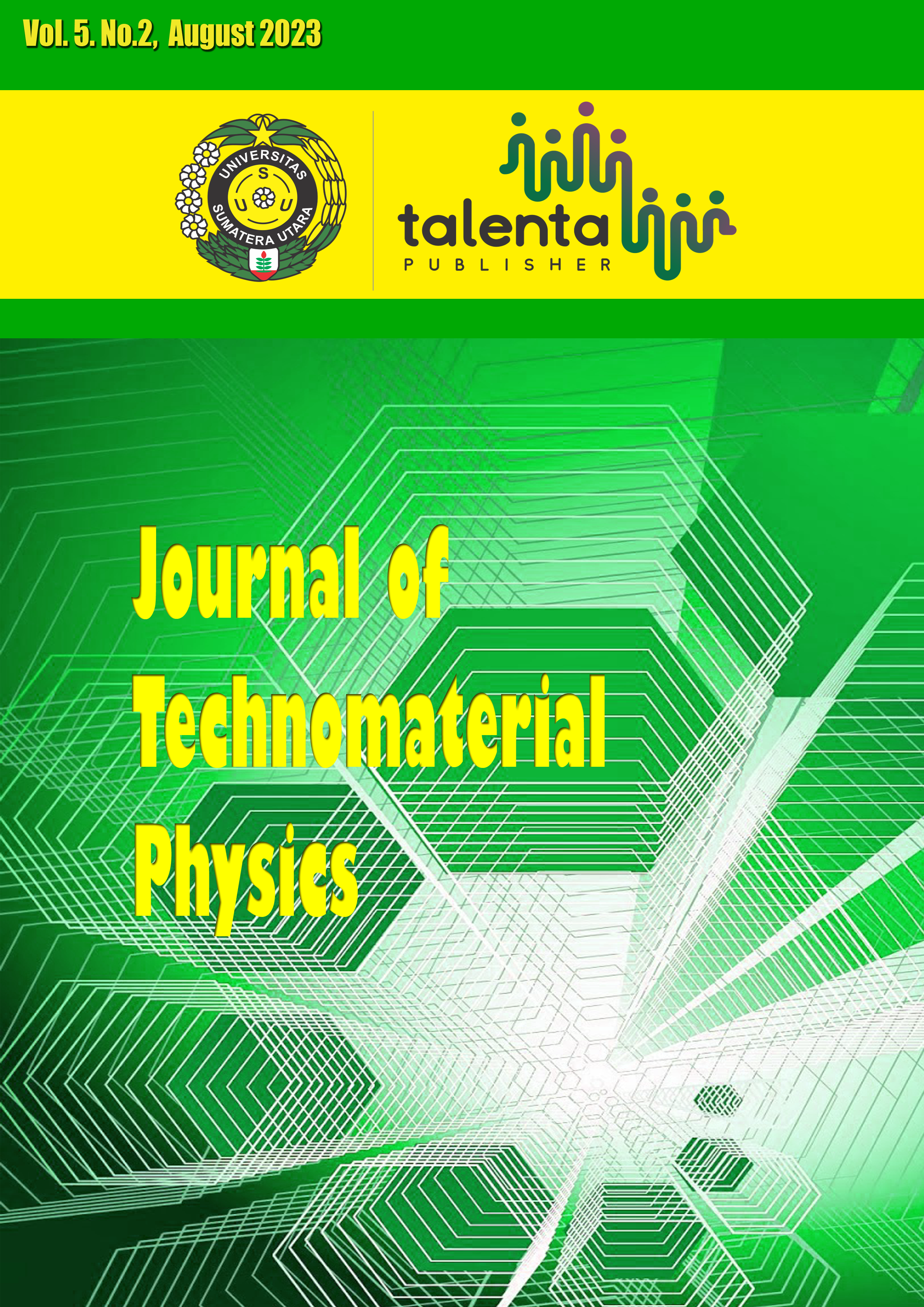The Effect of Fe3O4 Addition on the Density and Porosity of Cellulose Nanofiber Aerogel Extracted by Oil Palm Trunk
DOI:
https://doi.org/10.32734/jotp.v5i2.12328Keywords:
Aerogel, Cellulose, Density, Fe3O4, PorosityAbstract
This study investigates the influence of Fe3O4 addition on cellulose nanofiber aerogels' density and porosity characteristics. The cellulose nanofiber aerogels were synthesized with varying concentrations of Fe3O4: 0%, 0.25%, 0.5%, 0.75%, and 1%. The characterization of the cellulose nanofiber aerogels included physical tests to determine density and porosity and Fourier transform infrared (FTIR) analysis for functional group analysis. The results reveal a progressive increase in density from the lowest to the highest Fe3O4 concentrations: 0.115 g/cm3, 0.135 g/cm3, 0.162 g/cm3, 0.163 g/cm3, and 0.241 g/cm3 for Fe3O4 concentrations of 0%, 0.25%, 0.5%, 0.75%, and 1%, respectively. Similarly, the porosity of the cellulose nanofiber aerogels exhibited a trend of decreasing values from the lowest to the highest Fe3O4 concentrations: 90.808%, 89.499%, 88.064%, 87.764%, and 82.844% for Fe3O4 concentrations of 0%, 0.25%, 0.5%, 0.75%, and 1%, respectively. Furthermore, FTIR analysis indicated that the structural integrity of the cellulose aerogels remained unchanged even after the incorporation of Fe3O4. While no new functional groups emerged, a discernible shift in wave numbers suggests the formation of bonds between the polymer network and Fe3O4. In conclusion, adding Fe3O4 to cellulose nanofiber aerogels led to notable alterations in density and porosity, while FTIR analysis confirmed the establishment of bonds between the polymer network and Fe3O4 without causing significant structural changes.
Downloads
Downloads
Published
Issue
Section
License
Copyright (c) 2023 Journal of Technomaterial Physics

This work is licensed under a Creative Commons Attribution-ShareAlike 4.0 International License.








